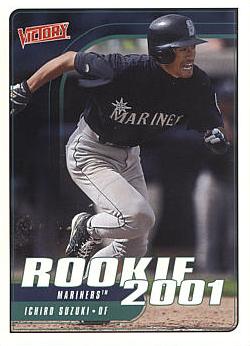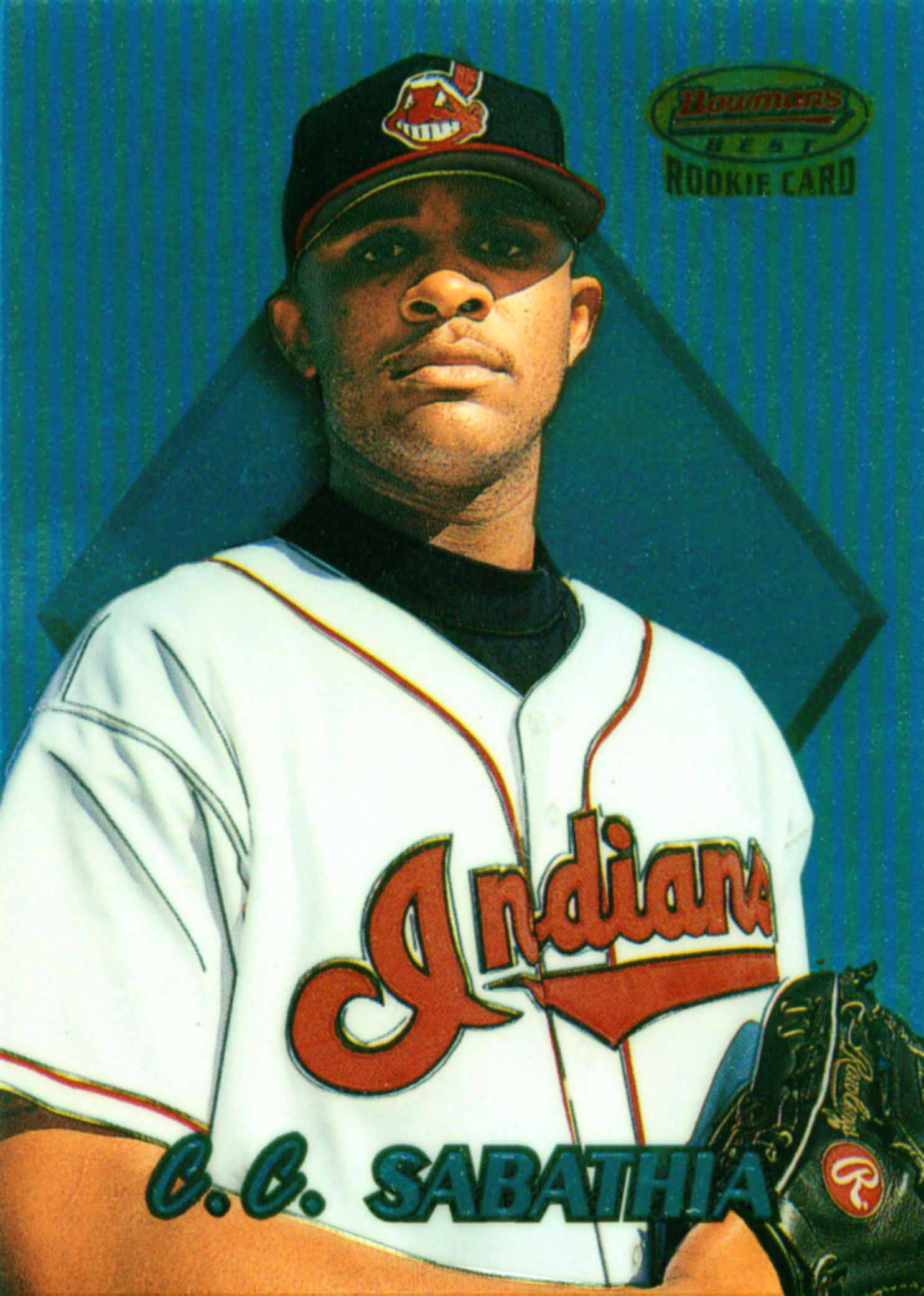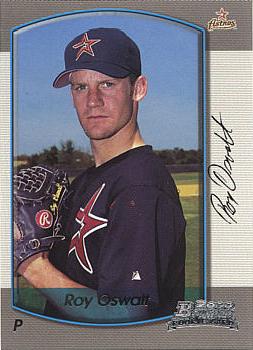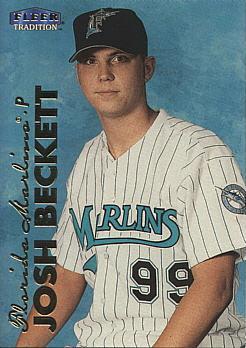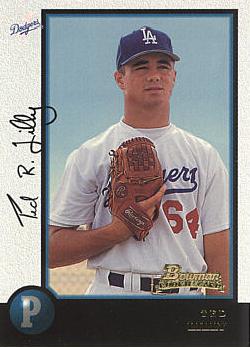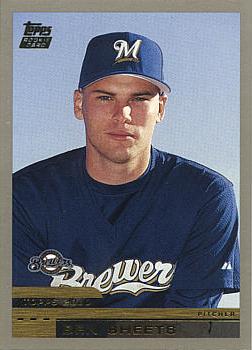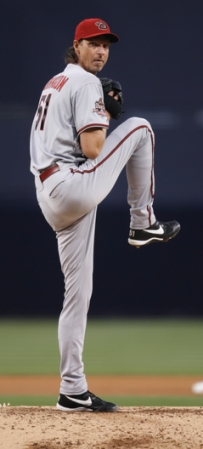 COLORADO BRIAR JUMPERS
COLORADO BRIAR JUMPERSBallpark: Coors Field
Power Rank: 6
Division Standing: 1
Projected Record: 89-73
Biggest Strength: Outfield
Greatest Weakness: Overall Team Defense
Most Important Pitcher: Greg Maddux, SP
Most Important Position Player: Gary Sheffield, OF
Young Stud: Rick Ankiel (20), SP
Roster Dud: Brett Boone, 2B
Surprise Player: Mike Lowell, 3B
Draft Recap: Colorado selected 8th overall in the draft and scored big with their first several selections. First pick Greg Maddux has been outstanding so far, going 11-5 with a 2.34 ERA, 0.99 WHIP and seven complete games. Gary Sheffield, selected in the 3rd round, has been the team's hitting star. He currently has a .353 average with 19 doubles and 17 home runs. He leads the team in runs scored with 58, is second in RBI with 54 and has a 1.139 OPS. The team's surprise player, Mike Lowell, was selected in the 6th round. He leads the Briar Jumpers in RBI with 57 and is batting .304 with 20 doubles and 11 homers. Manager Jason Speaks waited to fill his bullpen with late selections and it paid off. Anthony Telford (23rd), Scott Sauerbeck (26th) and Heathcliff Slocumb (28th) have gone a combined to go 5-1 with six saves and a 3.56 ERA in 73.1 innings.

2000 Outlook: Jason has his team primed to make a push for a playoff spot in our current season. Unfortunately, the Briar Jumpers play in the MBL's most competitive division with three of the four teams within three games of one another in the standings. One thing Colorado has going for them is that they are good at just about everything. Team speed and defense leaves a little to be desired, but the team hits well, gets on base well, slugs well and pitches well. The staff has four quality starters in Maddux, Rick Ankiel, Gil Heredia and Pat Hentgen. The bullpen has no clear cut closer, but five relievers have combined for 16 saves.
Offensively, the outfield is hard to beat. Sheffield and Darin Erstad both have batting averages over .350 and on-base percentages over .400. Third outfielder Brian Jordan is a menace against left-handed pitching, hitting an out-of-this-world .491 with a 1.317 OPS. The catching platoon of Brook Fordyce and Jorge Fabregas has been a pleasant surprise, combining to hit .350 with 12 homers and 49 RBI. A key to the rest of the season could be the production of 2B Bret Boone. He's struggled to date, batting only .213 with three home runs. If he can get on track, the lineup should improve on their 5.3 runs per game.
Future Outlook: Unfortunately for Jason and his Briar Jumpers, the future may be now in Colorado. Three quarters of the starting rotation, with the exception of Greg Maddux, are of little or no help to the staff in the year 2001. Ankiel forgets how to pitch and is useless. Hentgen pitches well next season, but only for nine spot starts before being un-carded in 2002. Heredia sees his ERA jump from a usable 4.12 in 2000 to an iffy 5.58 in 2001, his last season in MLB. Eric Gagne will probably man one of the rotation spots next year. His real value though comes from 2002-2004 when he's the best reliever in baseball for the three year stretch.
The rest of the offense though either doesn't improve or gets worse. Sheffield and Lowell perform at about the same rate. The catcher platoon though of Fordyce and Fabregas is useless beyond our current season. Darin Erstad follows up his career year in 2000 by batting only .258 with nine homers in 2001. As a matter of fact, from 2001-2005 he combines to hit just .274 with a .700 OPS.
Colorado has their full compliment of draft picks at their disposal. They will obviously need to address the holes that they will have in the rotation for 2001 and beyond. A catcher(s) is also a necessity.

ARIZONA APACHES
Ballpark: Chase Field
Power Rank: 4
Division Standing: 2
Projected Record: 88-74
Biggest Strength: Offense
Greatest Weakness: Shortstop
Most Important Pitcher: Mariano Rivera, RP
Most Important Position Player: Jeff Kent, 2B
Young Stud: Ryan Dempster (23), SP
Roster Dud: Ramon Ortiz, SP
Surprise Player: Chris Truby, 3B
Draft Recap: Arizona had a very successful start to the 2000 MBL Draft, scooping up NL MVP Jeff Kent with their first overall selection, 20th overall, then coming back in the 2nd round and securing the services of Marioano Rivera. Kent was a steal in the 1st round. Rivera could be considered the steal of the 2nd round. The rotation was addressed in the next two rounds with David Wells and Ryan Dempster coming into the fold. Starting catcher Brent Mayne, filling in for the injured Mike Lieberthal, was selected in the 21st round. He's played in 62 of the Apaches 66 games to date and has a .316 batting average. 29th round selection Chris Truby is 20-47 with a 1.055 OPS in limited duty.
 2000 Outlook: Tom has assembled a bona fide contender this season. The Apache offense is arguably the best in MBL, ranking in the top-10 in every offensive category. They currently lead the league in slugging percentage, are third in batting average and second in OPS. Arizona has a very balanced attack, with every lineup regular is hitting between .283 and .320, with the lone exception of Shawn Green, who is batting .246.
2000 Outlook: Tom has assembled a bona fide contender this season. The Apache offense is arguably the best in MBL, ranking in the top-10 in every offensive category. They currently lead the league in slugging percentage, are third in batting average and second in OPS. Arizona has a very balanced attack, with every lineup regular is hitting between .283 and .320, with the lone exception of Shawn Green, who is batting .246.The key to the Arizona season will probably boil down to how well the pitching staff performs. The bullpen is very good with Rivera closing out games. He's setup by Jeff Nelson, who sports a 3.04 ERA in a team-leading 34 appearances. The rest of the relievers are struggling somewhat, blowing four saves and combining for a 5.57 ERA.
The starting rotation is solid if unspectacular. The top three of Wells, Dempster and Paul Abbott have all performed decently, combining for a 4.01 ERA. Kenny Rogers and Ramon Ortiz came over mid-season via trade and have yet to get on track, combining for a 7.71 ERA in eight starts. If those two can pitch to their norm, look for the Apaches to make a move in the standings.

Future Outlook: Arizona is another team that looks to regress next season, especially offensively. The only player who improves from 2000 to 2001 is right-fielder Shawn Green, who has back-to-back MVP caliber seasons the next two years. He belts 91 homers and has a combined .957 OPS in arguably the two best seasons of his career. Other than him though, nobody improves. Kent is still Kent, but he never replicates his 2000 numbers again. Edgar Martinez is Edgar Martinez for a couple more seasons before he retires. Shannon Stewart is remarkably consistent for the next few seasons with OPS numbers between .813 and .834 from 2001-2004. Every other lineup contributor gets worse. Tony Batista goes from 41 homers to 21. Mark Quinn loses 25 points off his batting average, from .294 to .269 and only manages a .298 OBP. He's done after 2001. Behind the plate, Lieberthal is AB limited, while Mayne is about the same.
Pitching-wise, the core of the rotation, Wells, Dempster and Rogers, all have poor 2001 seasons. Rogers is especially bad with a 6.19 ERA in 20 starts. Wells and Rogers rebound with solid seasons in 2002, while Dempster struggles as a starter before finding himself again as a closer for the Cubs in 2005. The staff will add Jon Garland in 2001. He's average to above-average for the rest of the decade. Ramon Ortiz has two good years in 2001 and 2002 before becoming bad in 2003.
Unfortunately, the Apaches have traded their 1st and 2nd round picks in the upcoming draft. The team will likely take a step backwards in 2001 barring a trade or two. The offense is destined to regress, and the pitching staff doesn't look to improve either, despite the addition of Garland to the rotation.

ST. LOUIS SLIDERS
Ballpark: New Busch Stadium
Power Rank: 9
Division Standing: 3
Projected Record: 87-75
Biggest Strength: Top-4 Rotation
Greatest Weakness: Outfield, Aging Veterans
Most Important Pitcher: Al Leiter, SP
Most Important Position Player: Mark McGwire, 1B
Young Stud: Adam Eaton (22), SP
Roster Dud: Greg Vaughn, RF
Surprise Player: Billy Koch, RP
Draft Recap: Manager Mike Parker took over the St. Louis franchise shortly after the season began, so he was not the one who assembled the Sliders roster as it currently exists. Mark McGwire was the teams first overall pick, selected 22nd overall. And while Big Mac is currently pacing the entire MBL in home runs, he carries "F" durability this year and next before retiring in 2002. A couple of solid starting pitchers, Al Leiter and Livan Hernandez, were picked up in the 2nd and 4th rounds respectively. They anchor the pitching staff. In a curious move, 5th round selection Ryan Klesko was traded away for Mo Vaughn, who was picked in the 23rd round. Closer Billy Koch was taken in the 9th round, the 11th relief pitcher drafted. He has been lights out so far with a 0.99 ERA and 16 saves. Tony Gwynn, selected in the 23rd round, leads the team in batting with a .355 average in his penultimate campaign.
2000 Outlook: St. Louis is a team on the move. When Mike took over the team, the Sliders record was 10-11. After losing his their first four games under their new manager, the team has taken off. Their record since May 4 is a remarkable 27-11. That's a .710 win percentage. They have had winning streaks of four, five and seven games. The Sliders are also the only team in the Millennium League yet to lose a game in extra-inning games, going 5-0 in extended contests to date. .Needless to say, Mike has done a remarkable job since taking over.
The key to the remainder of the 2000 season for the Sliders will be their ability to avoid the injury bug. The team is paced offensively by a quartet of "F" durable players in McGwire, Gwynn, 3B Ken Caminiti and 2B Craig Biggio. Those four typically slot as the 2-5 batters in the lineup. The honeymoon could be over if any or all of them go down for an extended period of time. McGwire has 53 hits, 30 of which are long balls. Gwynn, as mentioned before, leads the team in hitting. Caminiti has yet to miss a single game. He's belted 18 homers and compiled a .922 OPS. Another player with durability issues, Greg Vaughn, could stand to miss some time though. He's struggling at the plate, hitting .208 overall and only .194 against right-handed pitching.
Pitching is where the Sliders excel. The staff as a whole ranks 4th overall in the MBL. Leiter and Hernandez, as well as third starter Adam Eaton, have been as good as advertised. The fourth man in the rotation, Steve Trachsel, has performed beyond expectations, compiling a 3.30 ERA in nine starts. Closer Koch has completed all 16 save chances.
Future Outlook: St. Louis is yet another team who is in trouble in 2001 and beyond. Mo Vaughn is done after 2000. McGwire, Gwynn and Caminiti are limited next year and are done after 2001. It will be hard to replace all that production in the lineup. Biggio does stick around for a few more years, playing regularly and collecting 1000+ more hits before retiring in 2007. Roger Cedeno swipes 55 bags and hits .293 next year, so he has some value. Jose Valentin is also decent. He averages 28 homers a year from 2001-2004, but only hits .240 during that span with a .312 OBP.
The rotation for the Sliders is a little iffy as well the next few years. Leiter is solid, carrying a sub-4 ERA through 2004. Trachsel is also good during the same span. But Hernandez struggles in 2001 before stringing together four straight solid season between 2002 and 2005. Eaton is "F" durable in 2001 and is only good for six spot starts the following year. He does come back with three usable years from 2003-2005. There is no real help for the rotation on the roster. Blake Stein will probably occupy a rotation spot next season, but that doesn't excite anyone, and he's done after 2001. The bullpen will also take a step back as Koch struggles next year as well.
Mike has the Sliders full compliment of picks at his disposal for the 2001 draft. This team is in need of an infusion of youth. The lineup will definitely need to be addressed, unless St. Louis wants to roll the dice another year with "F" durability players. An extra arm for the rotation should also be a priority.
 HOUSTON BUFFALOES
HOUSTON BUFFALOESBallpark: Astrodome
Power Rank: 17
Division Standing: 4
Projected Record: 69-93
Biggest Strength: Youth
Greatest Weakness: Offense
Most Important Pitcher: Reid Cornelius, SP
Most Important Position Player: Jeff Frye, 2B
Young Stud: Roy Halladay (23), SP
Roster Dud: Reggie Sanders, OF
Surprise Player: Desi Relaford, SS
 Draft Recap: Houston used their first two selections in the draft on Manny Ramirez and Scott Rolen. Both are now members of the New York Rippers. In rounds four and five, the team selected Johnny Damon and Johan Santana. Those two are now on the Toronto Red Coats. In between, The Buffaloes selected Roy Halladay, who is arguably the best pitcher of the next decade. Jeff Frye, the team's leading hitter, was taken in the 16th round. William actually has struck gold with several late round selections. 20th round pick Rod Beck has allowed only one run in 14 innings of work. 21st round selection Reid Cornelius has thrown the league's only no-hitter to date. 24th round pick Willie Blair is 3-0 with a 1.47 ERA in 19 appearances. The 25th round netted starting first-baseman Wally Joyner, while the 29th round brought in starting shortstop Desi Relaford. That's quite an impressive haul for the last third of the draft!
Draft Recap: Houston used their first two selections in the draft on Manny Ramirez and Scott Rolen. Both are now members of the New York Rippers. In rounds four and five, the team selected Johnny Damon and Johan Santana. Those two are now on the Toronto Red Coats. In between, The Buffaloes selected Roy Halladay, who is arguably the best pitcher of the next decade. Jeff Frye, the team's leading hitter, was taken in the 16th round. William actually has struck gold with several late round selections. 20th round pick Rod Beck has allowed only one run in 14 innings of work. 21st round selection Reid Cornelius has thrown the league's only no-hitter to date. 24th round pick Willie Blair is 3-0 with a 1.47 ERA in 19 appearances. The 25th round netted starting first-baseman Wally Joyner, while the 29th round brought in starting shortstop Desi Relaford. That's quite an impressive haul for the last third of the draft!2000 Outlook: While the top three teams in the Western Division battle it out for a coveted playoff birth, the Houston franchise has begun to rebuild. The offense would be a good starting point as the Buffaloes rank dead last in runs per game, scoring only 4.3 times per game on average. They are also the league's worst at OBP, getting on base at .326 clip. The team's .714 OPS is tied for last in the league. No batter on the team has more than seven home runs. The St. Louis Sliders Mark McGwire has 30 home runs himself. The Buffaloes as a team have only hit 53, and 15 of those are by players no longer on the team. Wally Joyner leads the team in RBI with a mere 27. Outfielder Reggie Sanders has been especially poor, hitting only .181 with a .219 on-base average. His total OPS is .558. In 151 at-bats against right-handed pitching, Sanders is hitting only .159.
Future Outlook: Whereas the other teams in the division look to regress in 2001, Houston is a team looking to make a surge to the top of the standings. This team is very young, especially compared to the other team's in this division. The pitching staff will be headed by 23-year-old Roy Halladay for the next decade. From 2001-2011, Halladay is phenomenal, averaging 16 wins while compiling a 2.98 ERA. He pitched in eight All-Star games during that span, won two Cy Young Awards, finished second in the voting twice, third once and fifth two more times. In 2001 he is limited to half the season. Joe Mays will likely head the staff next year. He had an outstanding season in 2001, leading the American League in ERA+ while compiling an actual ERA of 3.16. He's "jam" rated and held opposing hitters to a .235 average. Jason Johnson also becomes a full-time starter in 2001, starting 32 games with a 4.09 ERA.
 The bullpen seems to be in fine shape as well. Arthur Rhodes is nearly un-hittable in 2001, a season which saw him go 8-0 with a 1.72 ERA and 0.853 WHIP. He continues to pitch sporadically well for the remainder of the decade. Rod Beck, Ramiro Mendoza and Rolando Arrojo all are decent next season and provide depth for the bullpen.
The bullpen seems to be in fine shape as well. Arthur Rhodes is nearly un-hittable in 2001, a season which saw him go 8-0 with a 1.72 ERA and 0.853 WHIP. He continues to pitch sporadically well for the remainder of the decade. Rod Beck, Ramiro Mendoza and Rolando Arrojo all are decent next season and provide depth for the bullpen.The offensive outlook is even brighter for the Buffaloes. Young studs David Ortiz and Paul Konerko are waiting in the wings, as well as A.J. Pierzynski and Carlos Guillen. Those four are all under the age of 25 in 2001. They will join a lineup led by Luis Gonzalez, who had his career best year in 2001 when he hit 57 home runs and had a 1.117 OPS. That's rarefied air there. Gonzalez is actually a good player through the 2008 season. Desi Relaford has his career best year as well in 2001. Not 1.117 OPS good, but good nonetheless (.302 BA, .836 OPS). Holdovers Bobby Higginson, Reggie Sanders, Mark Grudzielanek, Aaron Boone and Benito Santiago perform decently enough to give Houston a pretty solid lineup for 2001.
Houston has stocked up on draft picks for the upcoming draft, acquiring two additional 3rd round picks as well as an extra 4th rounder. That gives them seven selections in the first four rounds. Worst to first? I think it seems likely for the Buffaloes in 2001.

.jpg)



